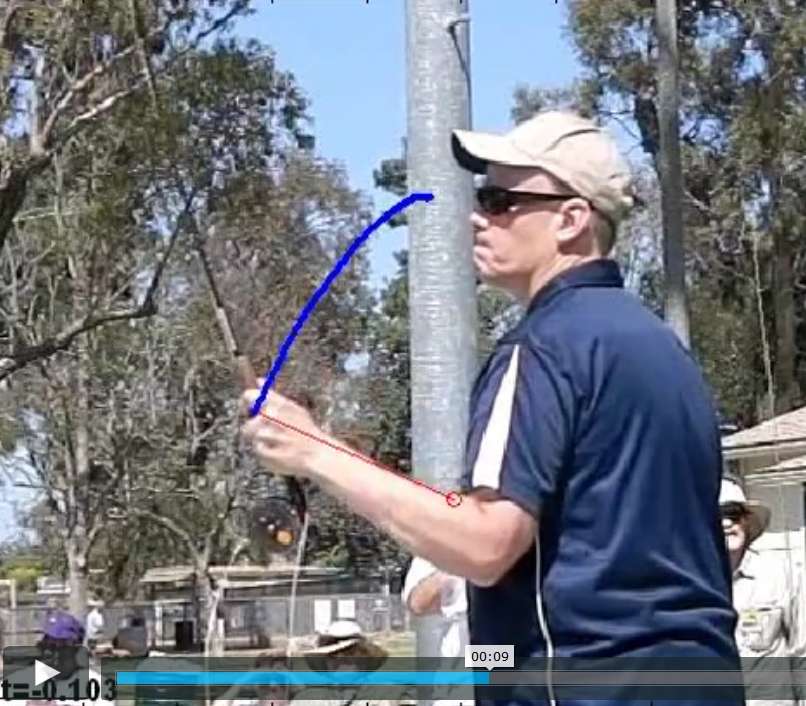The story of the inertial effect is given in the “Physics of the overhead fly cast” which can be downloaded from SL
here
I used my 2D casting model to run two cases with different rods and hopefully get a better idea of the energy split in between mechanisms (inertia, spring, and lever). There is no hauled used, the stroke is varied with the amount of carry, and this is rather approximate, since there is no exact law to define that (casting arc vs carry).
Here is the process is different from the one I posted before. I came back to basic equations to try making something mechanically sound. There are two kinds of forces working to accelerate the line: one due to inertia and the other one due to spring. Isolating the stored elastic energy is arbitrary; the spring is working all along the stroke. Common wisdom says that since that energy is captured by the line the shortcut is acceptable, this is all right for the large majority of cases, but there are exceptions where the stored elastic energy can be higher than the line kinetic energy (the catapult effect for very slow rods)!
Isolating the lever energy is also arbitrary, since you do not know what is happening to this energy during the stroke. Here the energy due to the lever is calculated at the maximum rotation speed of the stroke, and for the actual lever arm of the bended rod at that time. In terms of timing it happens much before the line maximum energy. Using the rigid lever arm can give inconsistent results, which is illustrated in one of the graphics.
There is an irreducible combined share of lever and spring once the stored elastic energy and the lever arm energy are discounted.
I could split energies like this:
• Inertial energy by difference in the model (with or without)
• Stored elastic energy: it is given by the model, there is a slight effect of the inertia on this energy, a few %
• Lever energy by using the actual arm lever of the bended rod, and I added the same for the rigid rod case to show the difference (dotted line).
• Combined spring and lever contribution: this is the difference in between the total energy provided by the moving spring, from which the stored elastic energy and the lever energy as defined above are discounted.
And now the two graphics:
Amazing, isn’t it? If I had chosen a different casting arc / carry relationship, I could have found something nearly constant for all cases. It shows the difficulty of comparing things in a very variable situation. Pick up other assumptions and you might be able to get what your intuition tells you.
Merlin

